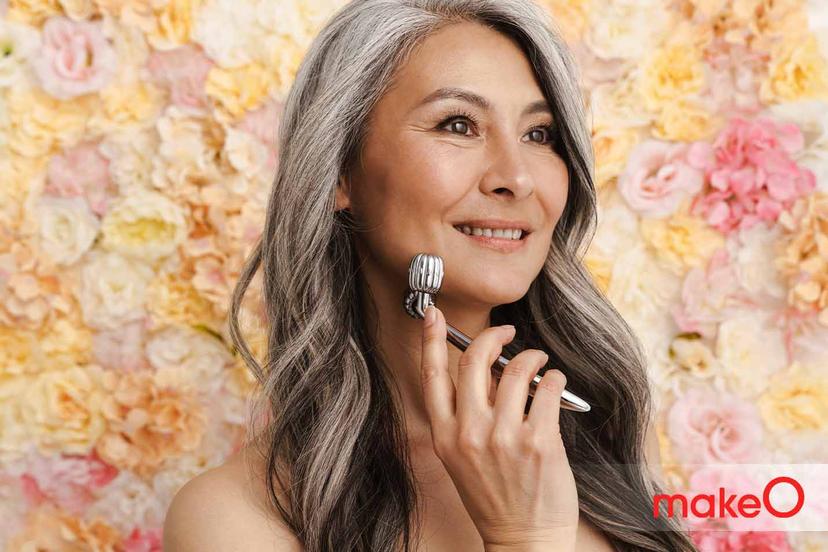MakeO blog
An average menstrual cycle lasts about 28 days and the hormonal levels on each of these days are different. The changes that happen in the body in the first half of the cycle are predominantly regulated by oestrogen while the changes in the other half are influenced by progesterone levels. According to a study published by the Archives of Dermatology, around 63% of acne-prone people experience aggravated acne during their periods.
What is Period Acne?
Are you experiencing acne flares one or two weeks before menstruation that usually go away after the period? If yes, then it may be period acne. Depending on the phase of your menstrual cycle, the levels of progesterone and oestrogen in your body fluctuate which causes acne breakouts. A sudden drop in the level of these hormones can also trigger acne flare-ups. But, how do you know if it is period acne? Let us understand their symptoms in depth.
How Do You Know It is Period Acne?
Hormonal acne is different from the acne you get normally. If you observe a pattern of frequent acne breakouts just before your period for a month or two, then it can be termed period or hormonal acne. They usually occur on the lower half of the face like your chin, cheeks, jawline or neck. They look like red, inflamed, raised bumps on the skin. Unlike other acne, they rarely develop into pustules (papules filled with pus). Even though they are not filled with pus, try not to squeeze them, as that can make the situation worse.
Changes in hormonal levels are the primary reason for such breakouts. The levels of testosterone in a female body usually remain constant. This is why, when the levels of progesterone and oestrogen drop before periods, the testosterone in the body is comparatively high. This causes pimples during periods.
Certain parts of the body like the lower third of the face, cheeks, neck, chest and back are hormone-dependent areas. Enzymes in these areas convert the free testosterone into a highly potent androgen called “dihydrotestosterone”. Due to this, the sebaceous glands become more active and start producing excess sebum which clogs the hair follicles, leading to breakouts. Often before menstruation starts, “Acne lesions” (yellow or white spots or tiny bumps under the skin) start to appear in the hormone-dependent areas.
Treatment of Period Acne
There are several options for hormonal acne treatment nowadays. They can be treated with creams, gels, ointments and even washes. Some of the most common OTC medications are the ones that contain benzoyl peroxide or salicylic acid. However, before consuming any kind of pills, it is best to consult a professional for the same.
If you have moderately painful pimples during periods, here are some hormonal acne treatments that you can try at home
Try a warm compress for 10-15 minutes. Repeat this process 3-4 times a day to soothe the ache and calm the skin. Alternatively, you can use a cold compress for 5-10 minutes to numb the pain or swelling. If you want, you can also easily find some ayurvedic treatments for acne due to hormonal imbalance as well.
Diet & Exercise for Period Acne
Any kind of hormonal acne can be tamed down by regulating the blood sugar levels in the body. A good hormonal acne diet does not consist of foods that have a high glycemic index. Examples of food with high glycemic index are:
- Sugary drinks and food
- White Bread
- Processed foods
Try avoiding these foods as much as you can to give your skin the love and care it needs during periods.
When to Consult with a Doctor
Mild to moderate monthly breakouts can be treated at home using the remedies and over-the-counter tables suggested above. However, if the pain gets unbearable or the frequency of pimples seems abnormal, it is time to consult your doctor. Visit your gynaecologist and they can help you find the root cause of the problem and fix it for good.
FAQs
When do period acnes occur the most?
Period pimples generally start to appear 7-10 days before the period. If the person already has pimples on their face, they may experience acne flare up during these days.
How long does period acne stay?
If you have acne-prone skin, it can be considered normal if your period of acne appears and lasts for approximately 10 days before your period starts.
Which hormones are responsible for hormonal acne?
Fluctuations in the levels of oestrogen, progesterone and testosterone can cause acne flare up.
Can you prevent hormonal acne?
Yes. You can try to make changes in your lifestyle like reducing stress, sleeping better, eating healthy and workout regularly to maintain healthy hormone levels in the body. Discuss prevention options that are specific to your body with a professional.
What foods should be avoided to prevent hormonal acne?
You must stay away from foods with a high glycemic index to prevent period pimples. This includes foods like sugary drinks and food, anything made from refined wheat flour, white rice and processed foods.
related categories
Related articles

Anti-Ageing Face Oils: Unveiling the 10 Best Facial Oils for Youthful Skin

Is Aloe vera effective for acne? Find out

5 Side Effects of Hair Removal Creams That You Must Know

5 Common Mistakes to Avoid When Using a Face Roller

